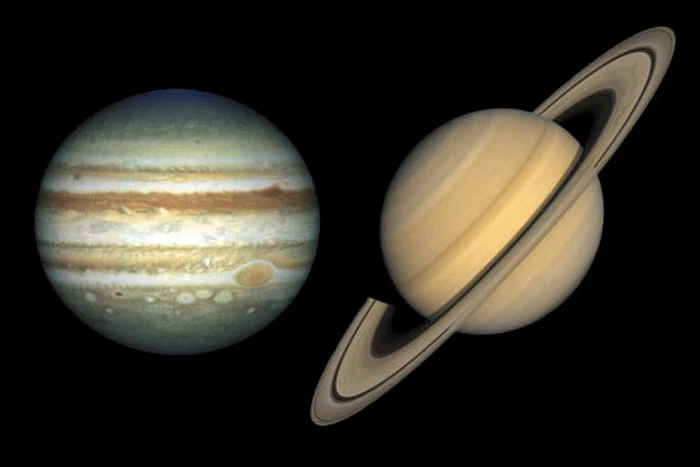Why Jupiter doesn't have rings like Saturn
A synthetic finger identifies the composition of common substances / Light as a fairy tale: What makes a feel-good movie feel good?
"It's long bothered me why Jupiter doesn't have even more amazing rings that would put Saturn's to shame," said UCR astrophysicist Stephen Kane, who led the research.
"If Jupiter did have them, they'd appear even brighter to us, because the planet is so much closer than Saturn." Kane also wondered if Jupiter had once had magnificent rings and then lost them. Ring structures might only exist for a short time.

Jupiter (left) and Saturn (right).
Kane and his graduate student Zhexing Li ran a dynamic computer simulation that accounted for the orbits of Jupiter's four major moons, the planet's orbit, and information about the time it takes for rings to form in order to determine why Jupiter appears as it does today. Their findings are now available online and will soon be published in the journal Planetary Science.
Saturn's rings are composed primarily of ice, some of which may have originated from ice-rich comets. If moons are sufficiently massive, their gravity can eject ice from a planet's orbit or alter the ice's orbit so that it collides with the moons.
"We found that the Galilean moons of Jupiter, one of which is the largest moon in our solar system, would very quickly destroy any large rings that might form," Kane said. Therefore, it is unlikely that Jupiter ever had large rings in the past. "Massive planets form massive moons, which prevents them from having substantial rings," Kane said.
Saturn, Neptune, Uranus, and also Jupiter, the four largest planets in our solar system, possess rings. However, both Neptune's and Jupiter's rings are so thin that they are difficult to observe with conventional astronomical equipment.
Jupiter's faint rings are visible in some of the most recent images captured by the newly commissioned James Webb Space Telescope.
"We didn't know these ephemeral rings existed until the Voyager spacecraft went past because we couldn't see them," Kane said.
Uranus has rings that are smaller than Saturn's but more substantial. Kane plans to run simulations of the conditions on Uranus to determine the potential lifetime of that planet's rings. As a result of a collision with another celestial body, some astronomers believe Uranus is on its side. Its rings may represent the remnants of this impact.
In addition to their aesthetic value, rings help astronomers understand the history of a planet by providing evidence of past collisions with moons or comets. The shape, size, and composition of the rings provide information regarding the type of event that caused them to form.
"For us astronomers, they are the blood spatter on the walls of a crime scene. When we look at the rings of giant planets, it's evidence something catastrophic happened to put that material there," Kane said.
Journal Reference: Stephen R. Kane, Zhexing Li. The Dynamical Viability of an Extended Jupiter Ring System. Planetary Science (accepted), 2022
End of content
Không có tin nào tiếp theo
